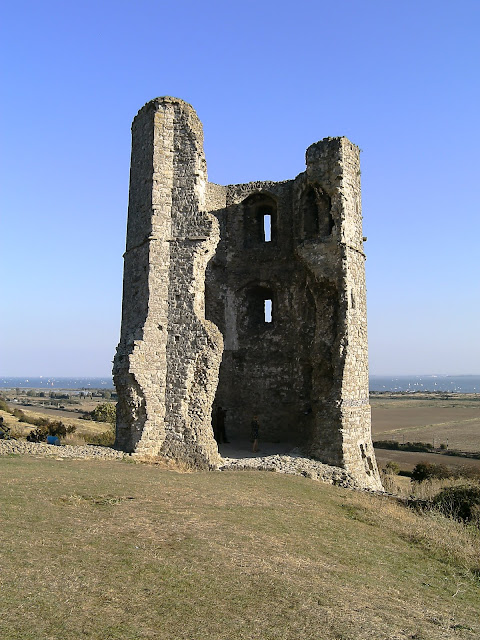On perhaps the hottest day in October - at least so far - I decided to have a trip to the seaside with a long walk from Southend on Sea to Leigh on Sea with an impromptu walk up to Hadleigh Castle. I managed to persuade a friend not to go to work today and he suggested Leigh rather than Brighton, which I always tend to look at first.
Starting off at West Ham station I was surprised to be given a single ticket instead of the usual '2-part return'.
Neither of the two towns are actually 'on sea' as they are both on the Thames Estuary. Of my trips to Southend I have never really seen it in the sunshine, only having been there on dull days. However Southend seemed rather pleasant in the sunshine with some fine gardens, especially heading towards Chalkwell.
After a brief shopping expedition in the town to buy some water for the journey, it was down to the sea front and off to the west for our walk to Leigh. There were many people taking advantage of the unusually summery weather, including the amusement proprietors. I was wondering if they had hastily re-opened after the season. The first point of interest was a single track cliff railway, which I had not seen on previous visits to Southend.
Afterwards, towards Chalkwell was an obelisk, the crow stone, erected by the Port of London Authority to demarcate where the City of London's jurisdiction over the Thames ended. Until 1857 the mayor and aldermen of the City used to row out to the crow stone to secure their rights over the Thames, which they had bought off Richard I who was financing crusades. After that time the PLA took over.

The Port of London Authority's jurisdiction ends much further out, beyond Shoeburyness but this historical marker, half drowned at high tide marks a point of history.
After an ice cream (Mr Whippy 99) and a bit of a sit down we began strolling along the sea front. After Chalkwell, the river became more leisured with the path running between sailing clubs and the railway line. On coming to Leigh on Sea with its cobbled High Street we decided to have some lunch in the Mayflower public house, which had converted some of its rooms into a rock shop, an ice cream parlour and a takeaway. After a long queue, I don't think it was really half an hour, we had some excellent chips sitting on the tiny harbourside looking at the two fishing boats and watching people disporting themselves in the water and throwing mud at each other.
After lunch we had a look at the tiny museum in Leigh, including an old fisherman's cottage furnished as it would have been a hundred years ago, and perhaps even later than that. There were some interesting exhibits including model shops.
Making our way down the High Street one of the pubs had a very good mod band playing outside. We stayed for a couple of numbers.
After that we continued our walk to Hadleigh Castle. Hadleigh castle is surrounded by a Salvation Army farm, that started life as 'Hadleigh Farm Colony' at some stage used for training men (of course) for emigration to 'the colonies'. It was never a colony for inebriates, even though the nearby country park is home to some rare invertebrates. The Salvation Army had erected a notice prohibiting letting off fireworks on their land. Whether this is a general nuisance or just for 5th November was not stated.

The castle itself is more of an observation post and with the spectacular views over the Thames would have been a very good one.
Henry III resided there using the great hall (which wasn't very great) and the solar behind, almost as big as the great hall. Only an observation tower is left standing as the land was and is unstable and subject to landslips.
After a look round the castle it was time to return to Leigh on Sea station for a weary journey home.





